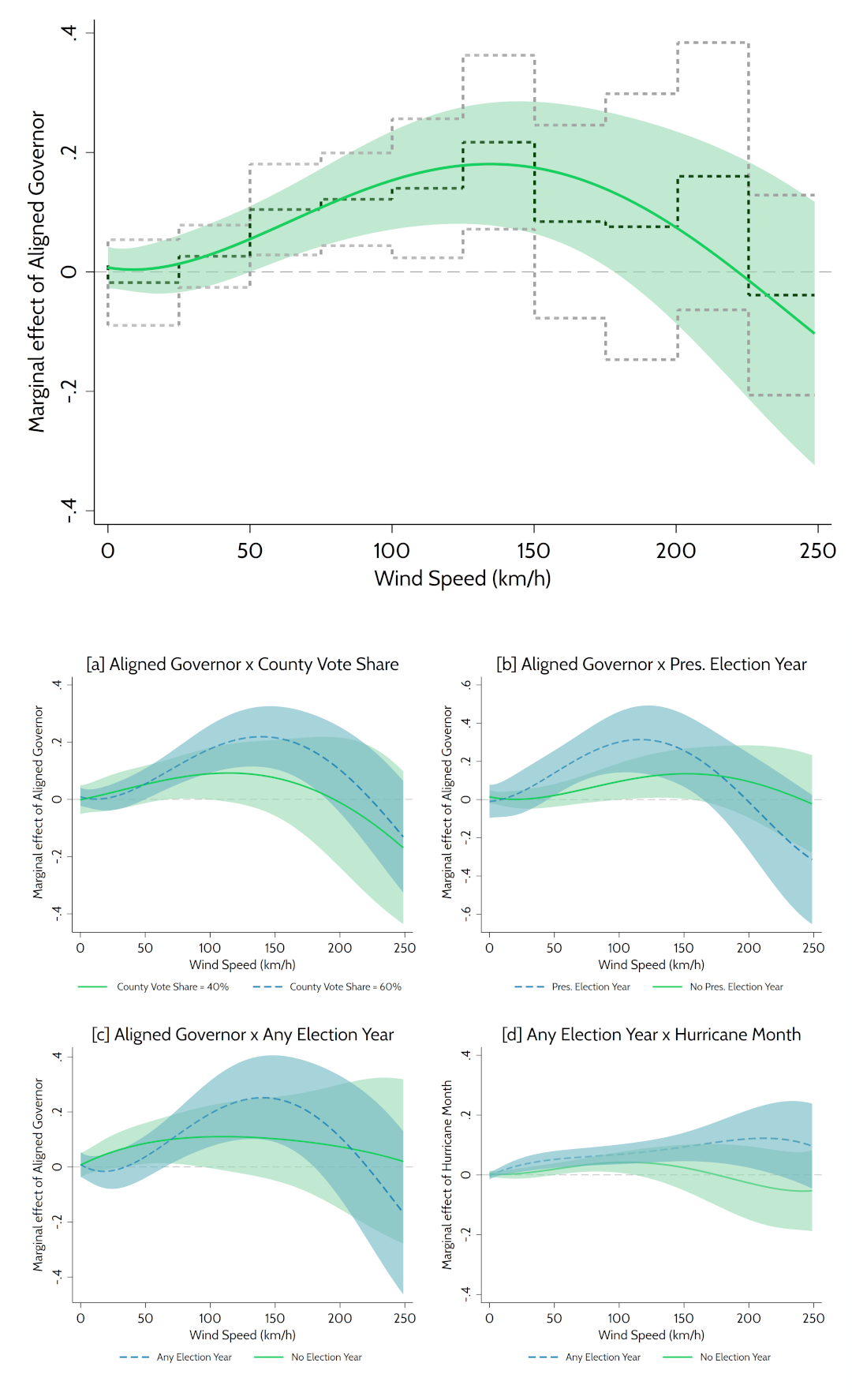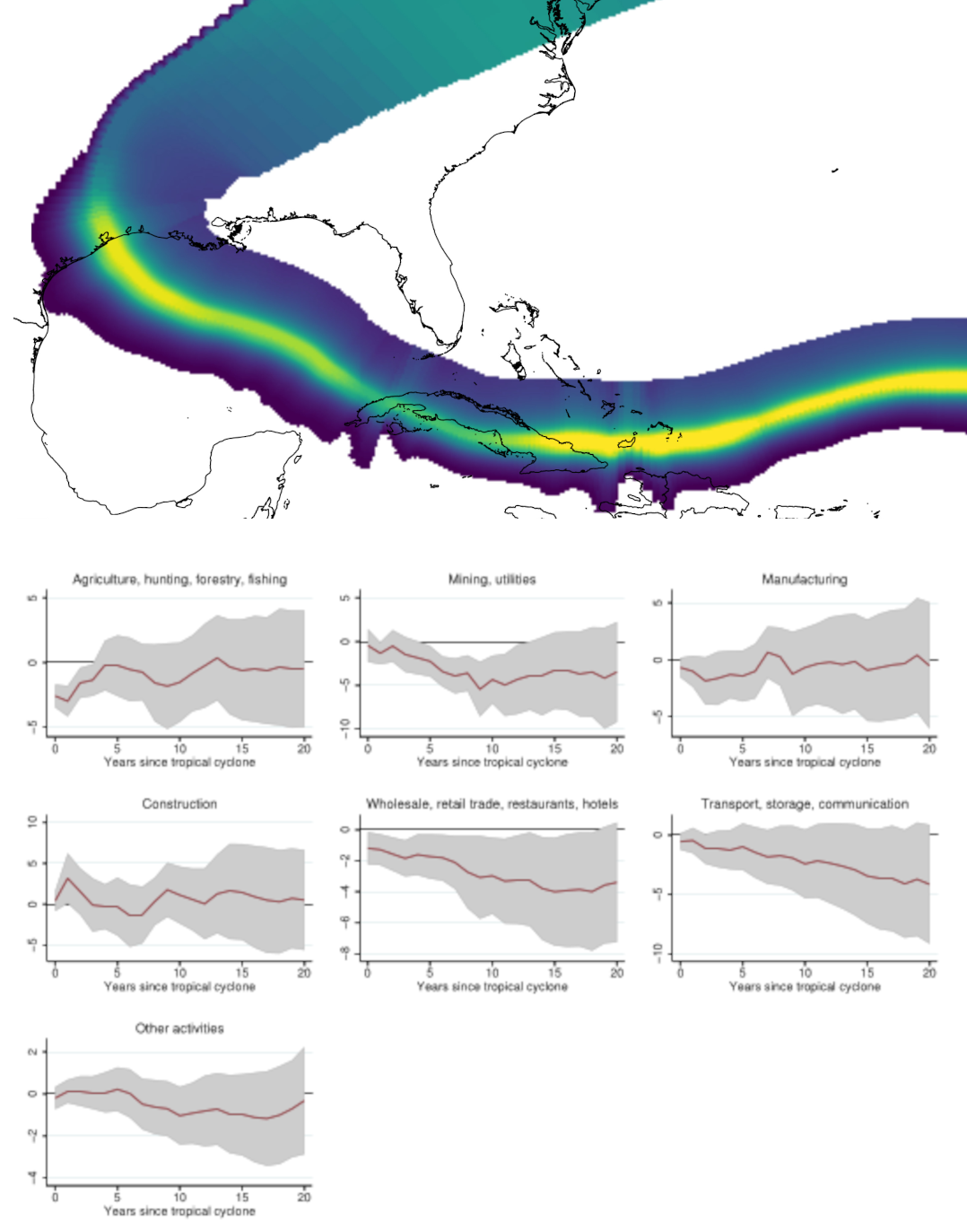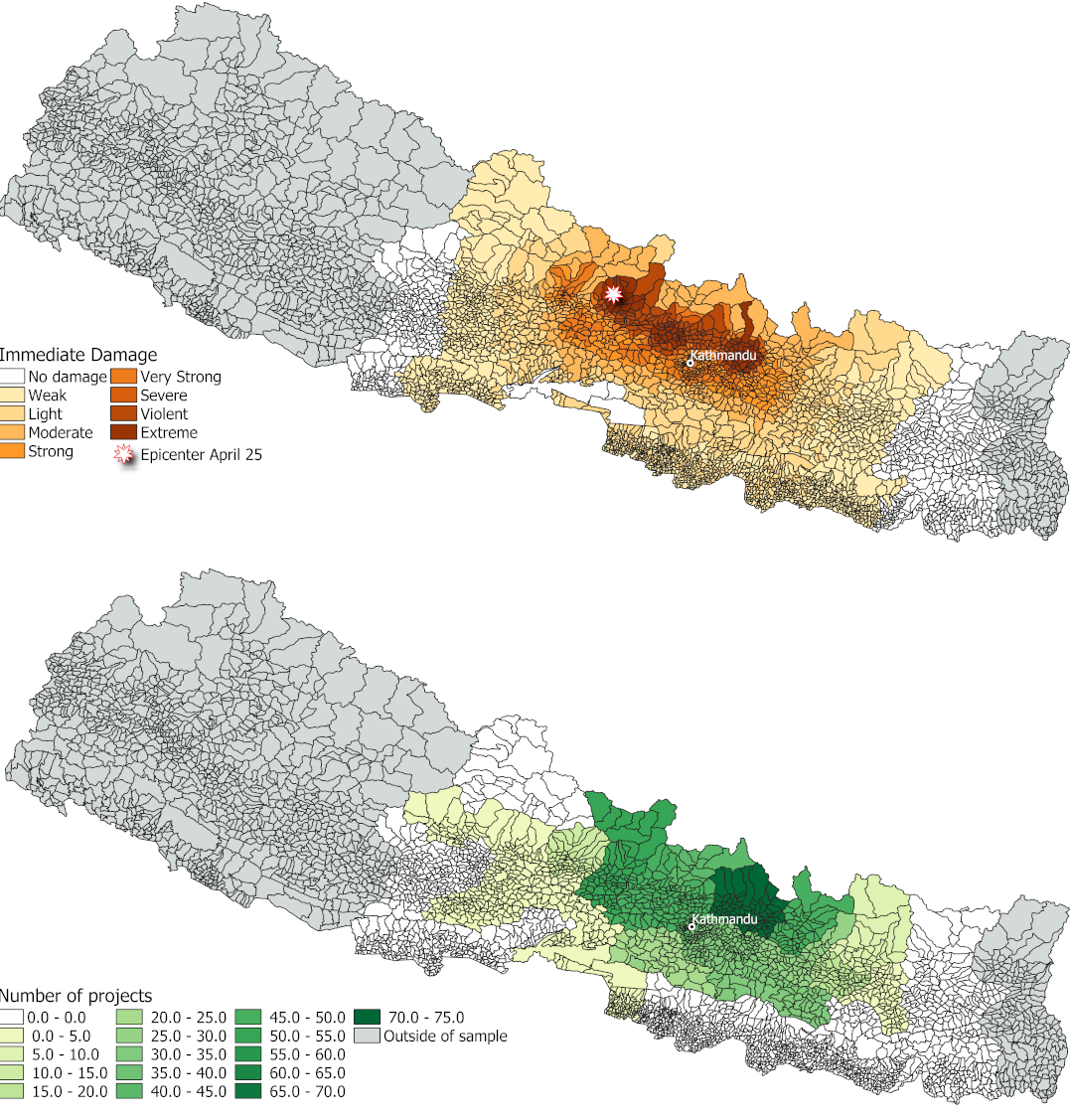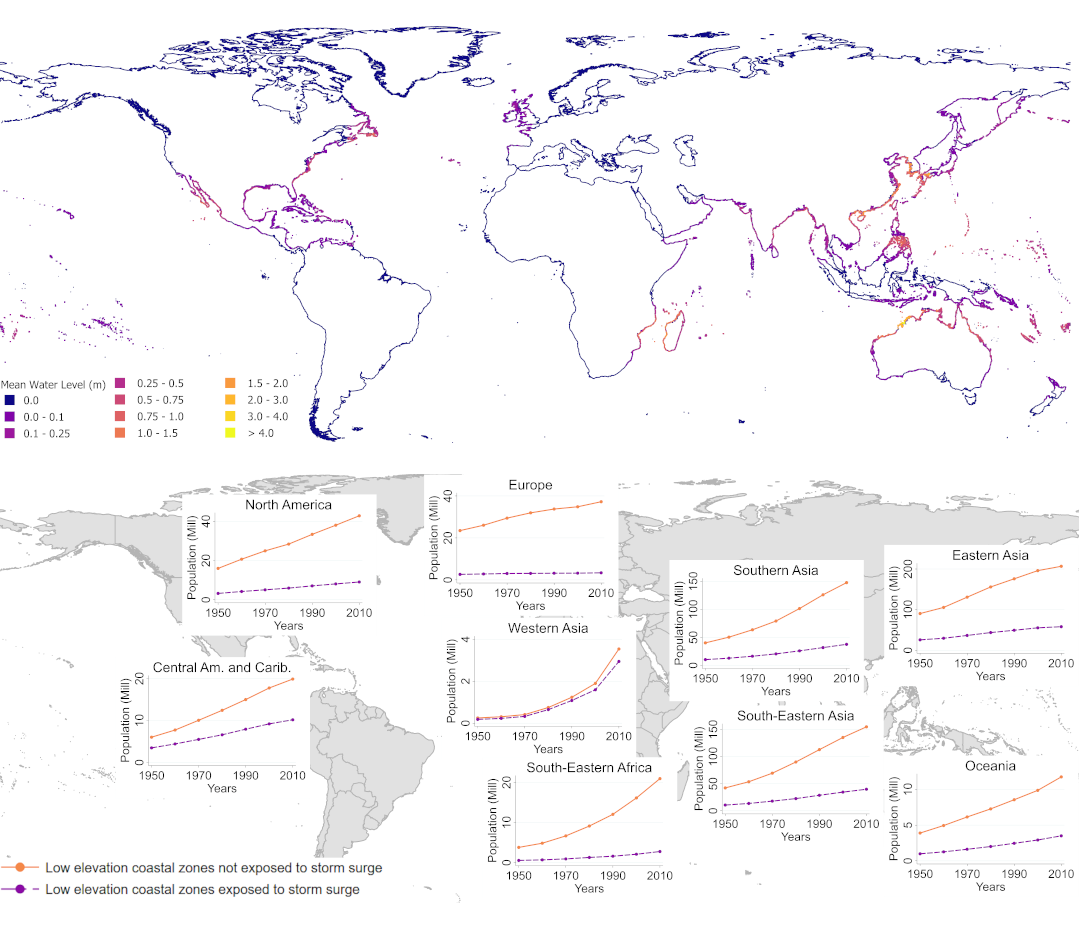Publications
Peer-Reviewed Publications
Disastrous Discretion: Political Bias in Relief Allocation Varies Substantially with Disaster Severity
with Stephan A. Schneider

The Review of Economics and Statistics (2023) [Link]
Most recent ungated version: [Link]
Press Coverage: KOF Bulletin November 2022
Allocation decisions are vulnerable to political influence, but it is unclear in which situations politicians use their discretionary power in a partisan manner. We analyze the allocation of presidential disaster declarations in the United States, exploiting the spatiotemporal randomness of all hurricane strikes from 1965-2018 along with changes in political alignment. We show that decisions are unbiased when disasters are either very strong or weak. Only after medium-intensity hurricanes do areas governed by presidents’ co-partisans receive up to twice as many declarations. This hump-shaped political bias explains 8.3 percent of overall relief spending, totaling about USD 400 million per year.
Unraveling the Effects of Tropical Cyclones on Economic Sectors Worldwide: Direct and Indirect Impacts

Environmental and Resource Economics, 2021, 78:545–569. [Open Access] [Data]
This paper examines the current, lagged, and indirect effects of tropical cyclones on annual sectoral growth worldwide. The main explanatory variable is a new damage measure for local tropical cyclone intensity based on meteorological data weighted for individual sectoral exposure, which is included in a panel analysis for a maximum of 205 countries over the 1970–2015 period. I find a significantly negative influence of tropical cyclones on two sector aggregates including agriculture, as well as trade and tourism. In subsequent years, tropical cyclones negatively affect the majority of all sectors. However, the Input–Output analysis shows that production processes are sticky and indirect economic effects are limited.
Distortions in Aid Allocation of United Nations Flash Appeals: Evidence from the 2015 Nepal Earthquake
with Vera Z. Eichenauer, Andreas Fuchs, and Eric Strobl
World Development, 2020, 136 (105023). [Link]

We examine the design and implementation of the United Nations Flash Appeal triggered in response to the highly destructive 2015 Nepal earthquake. We consider how local need and various distortions affect the proposed project number, the proposed financial amount, and the subsequent funding decision by aid donors. Specifically, we investigate the extent to which the allocation of this humanitarian assistance follows municipalities’ affectedness and their physical and socio-economic vulnerabilities. We then analyze potential ethnic, religious, and political distortions. Our results show that aid allocation is associated with geophysical estimates of the earthquake damage. Controlled for disaster impact, however, aid allocation shows little regard for the specific socio-economic and physical vulnerabilities. It is also worrisome that the allocation of the flash appeal commitments favors municipalities dominated by higher castes and disadvantages those with a greater distance to the Nepali capital Kathmandu.
Work in Progress
The Global Long-Term Effects of Storm Surge Flooding on Human Settlements in Coastal Areas
with Eric Strobl

Accepted at Environmental Research Letters, 2023
People in low-lying coastal areas live under the great threat of damage due to coastal flooding from tropical cyclones. Understanding how coastal population settlements react to such events is of high importance for society to consider future adaptation strategies. Here we generate a new global hydrodynamic data set on tropical cyclone-generated storm surge flooding for the period 1851-2020. By combining this data with spatial data on human populations, we analyze the influence of the depth of storm surge flooding on the rural, urban, and total populations in low elevation coastal zones from 1941-2010.
We find that in response to a one standard deviation increase in storm surge flooding depth (0.43 meters), the exposed population in a 10x10 kilometer low elevation coastal zone decreases by around 970 individuals on average per decade. This reduction corresponds to 9\% of the average population living in an exposed grid cell. Tropical cyclone generated wind speed and rainfall do not influence the relocation of coastal populations. The majority of the threatened population lives in Easter, South-Eastern, and Southern Asia. We show that the exposed coastal population appears to have adapted over time by reducing its exposure in recent decades. This finding applies to all regions other than North America, Oceania, and Western Asia.
What drives agricultural land use change in Eurasia? (with Raushan Bokusheva and Olga Laiko).
Sectoral Flood Impacts in Europe - Insights from a new Spatial Sectoral GDP Dataset (with Aurélien Saussay and Leonie Wenz).
Choosing the right spot? Natural Disaster Risk Exposure of Colonial Settlers.
Subnational Growth Effects of Tropical Cyclones (with Leonie Wenz).
